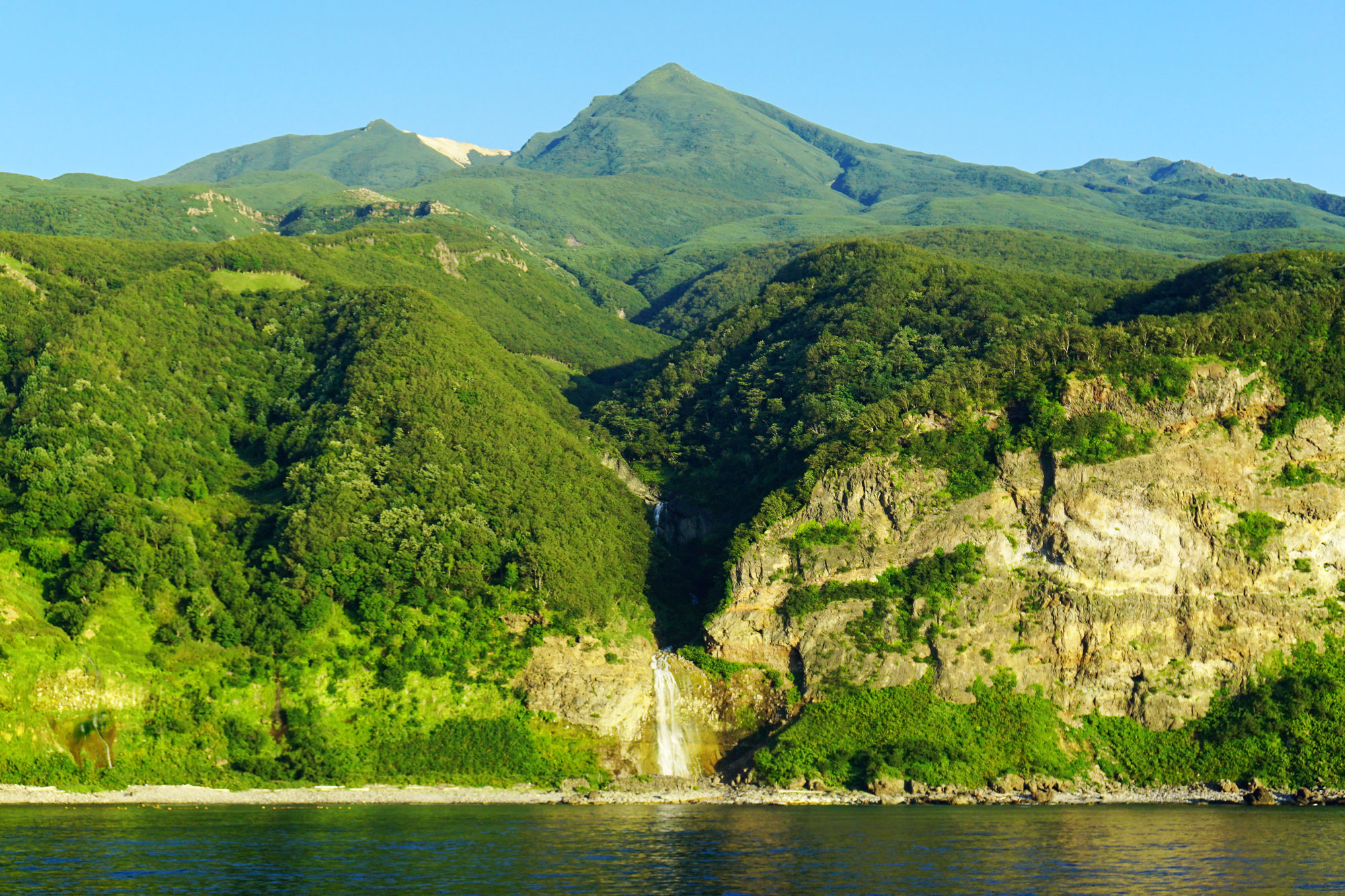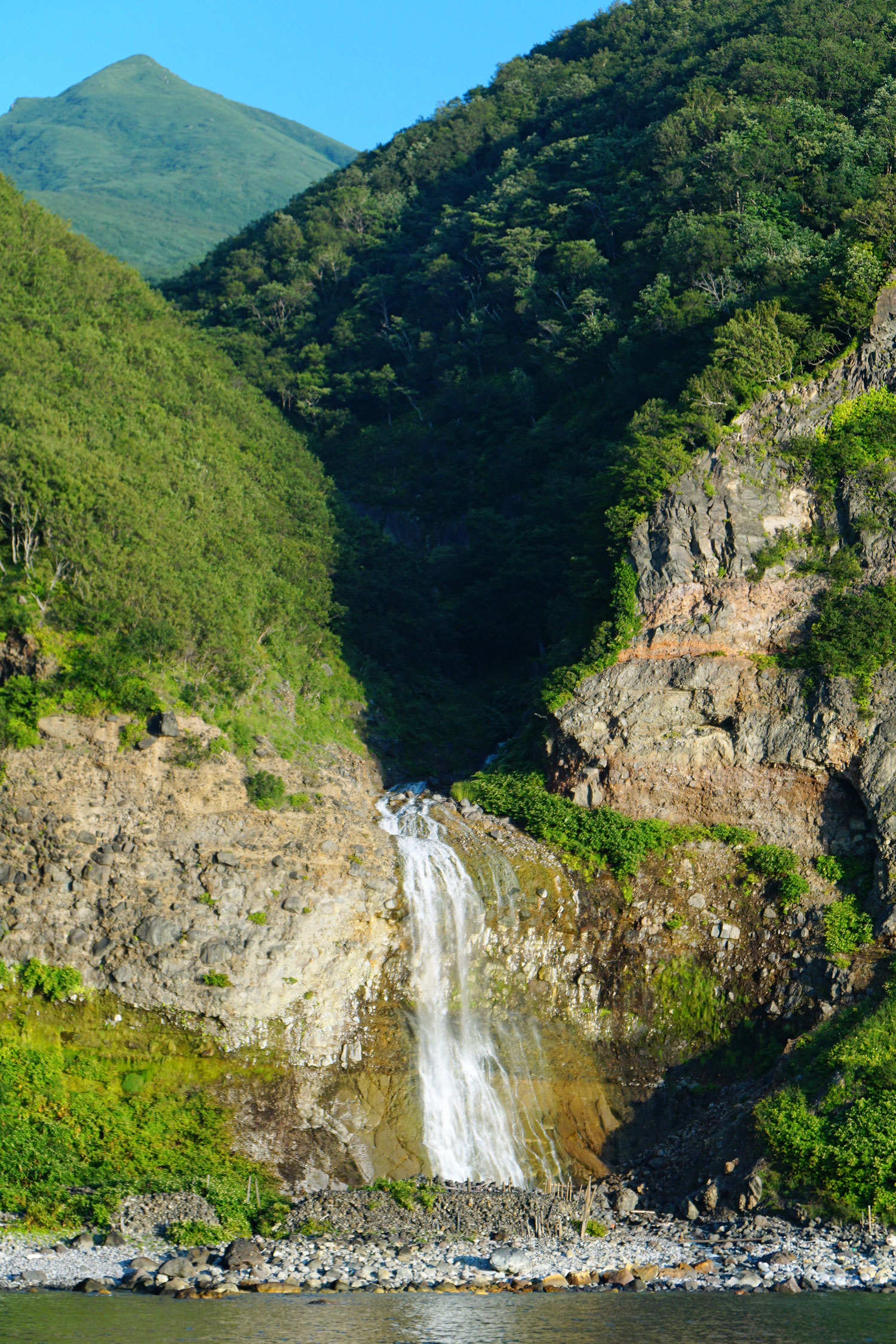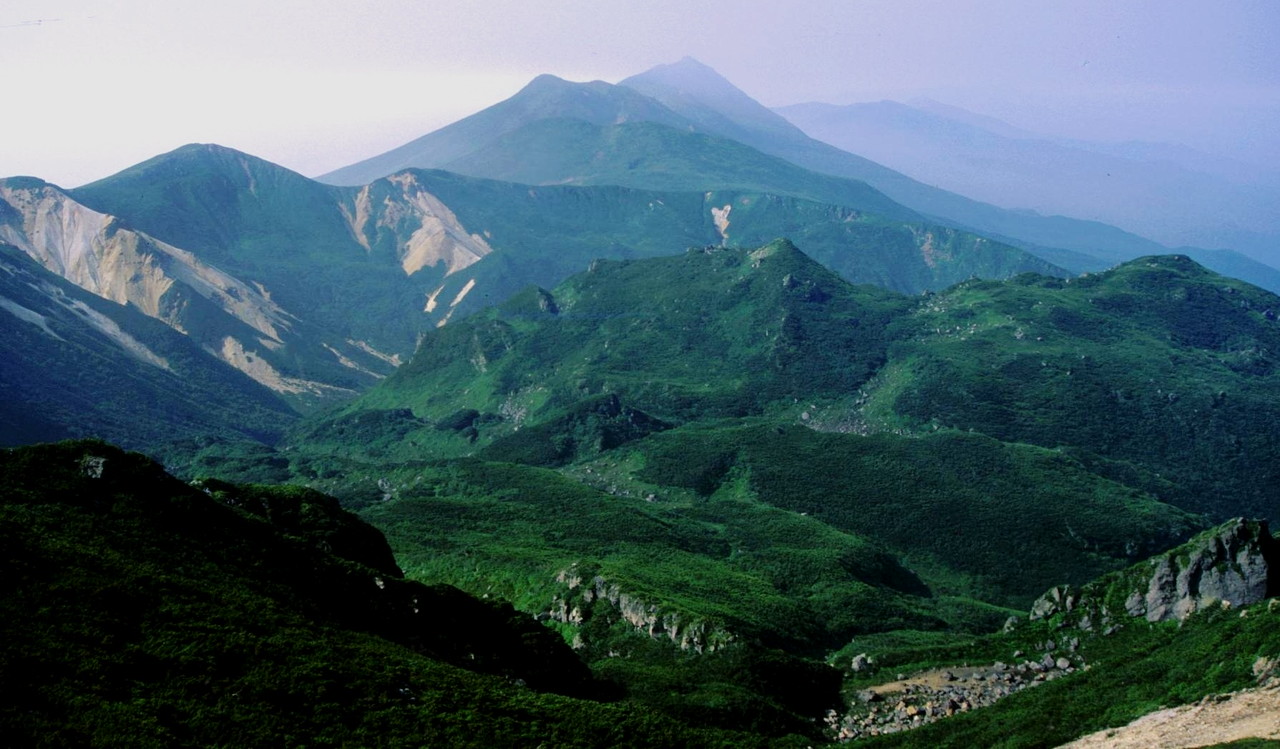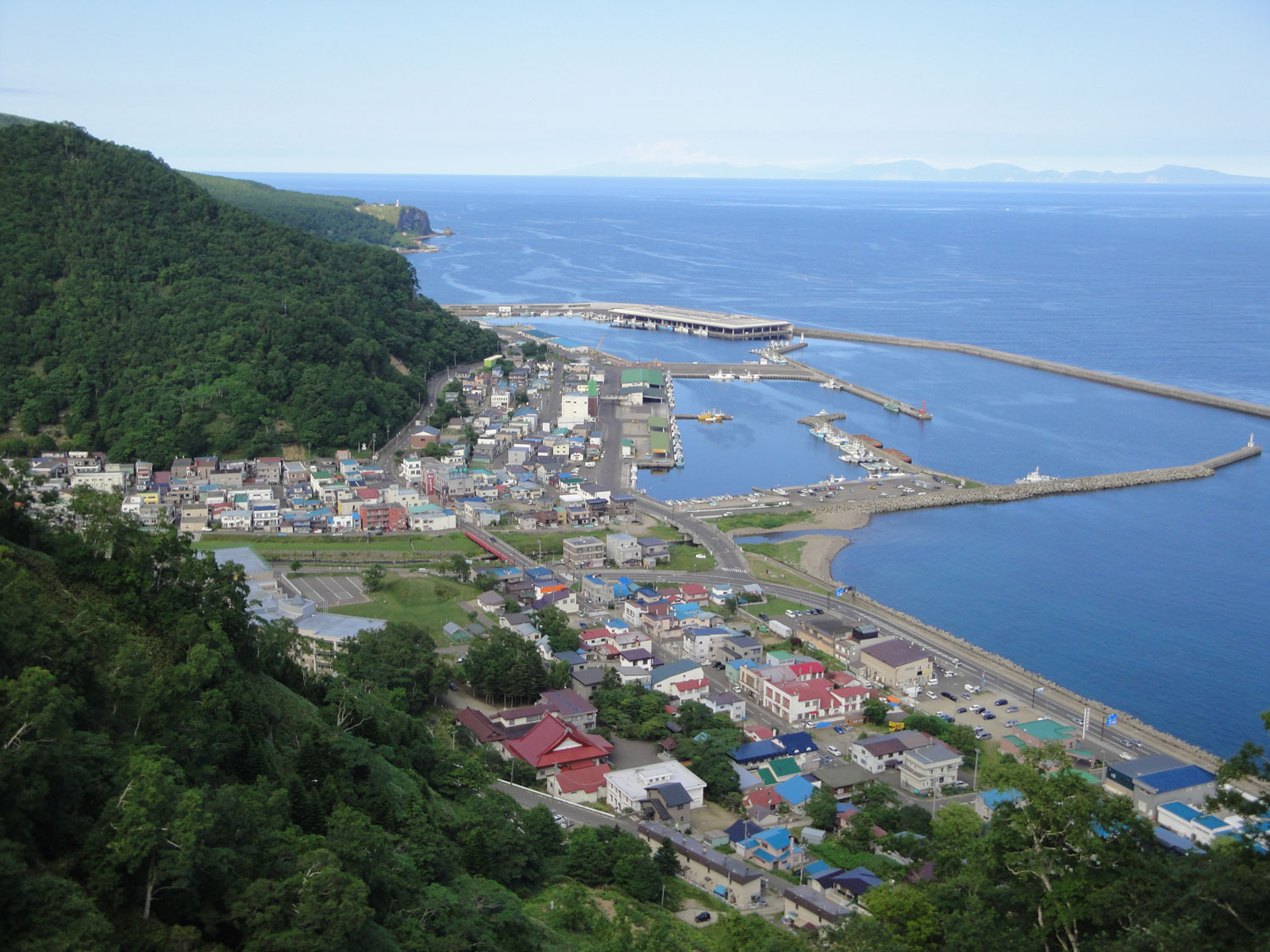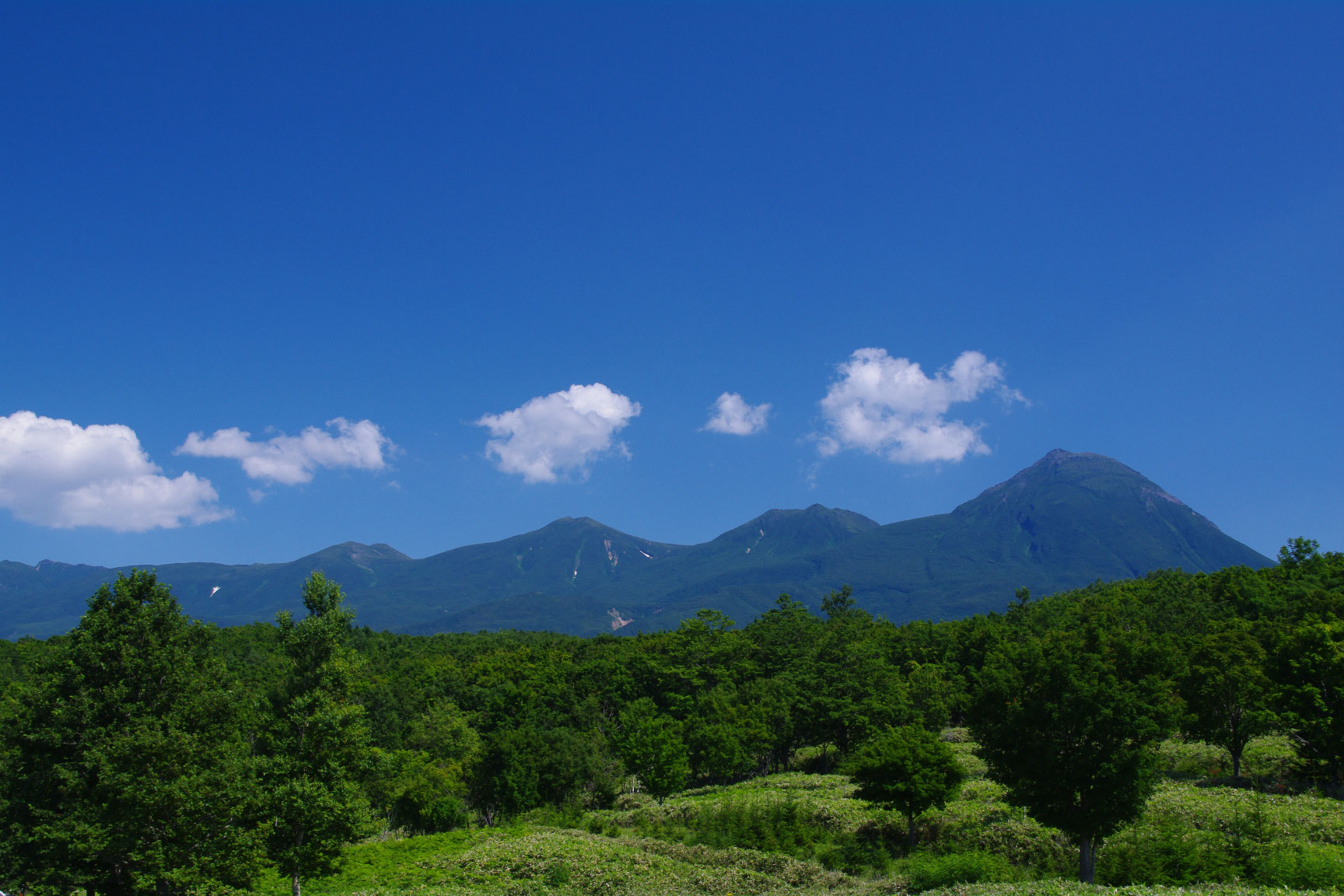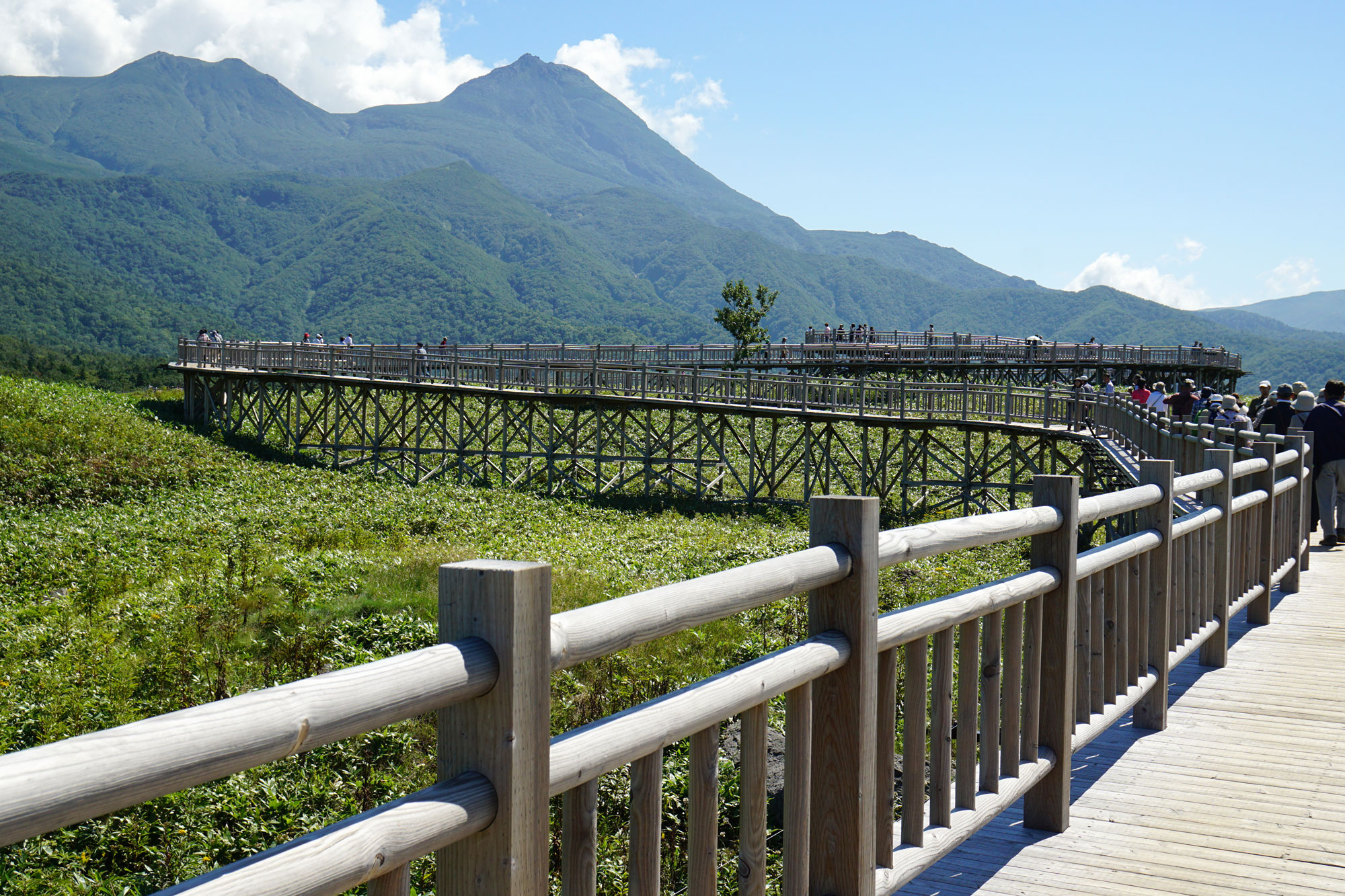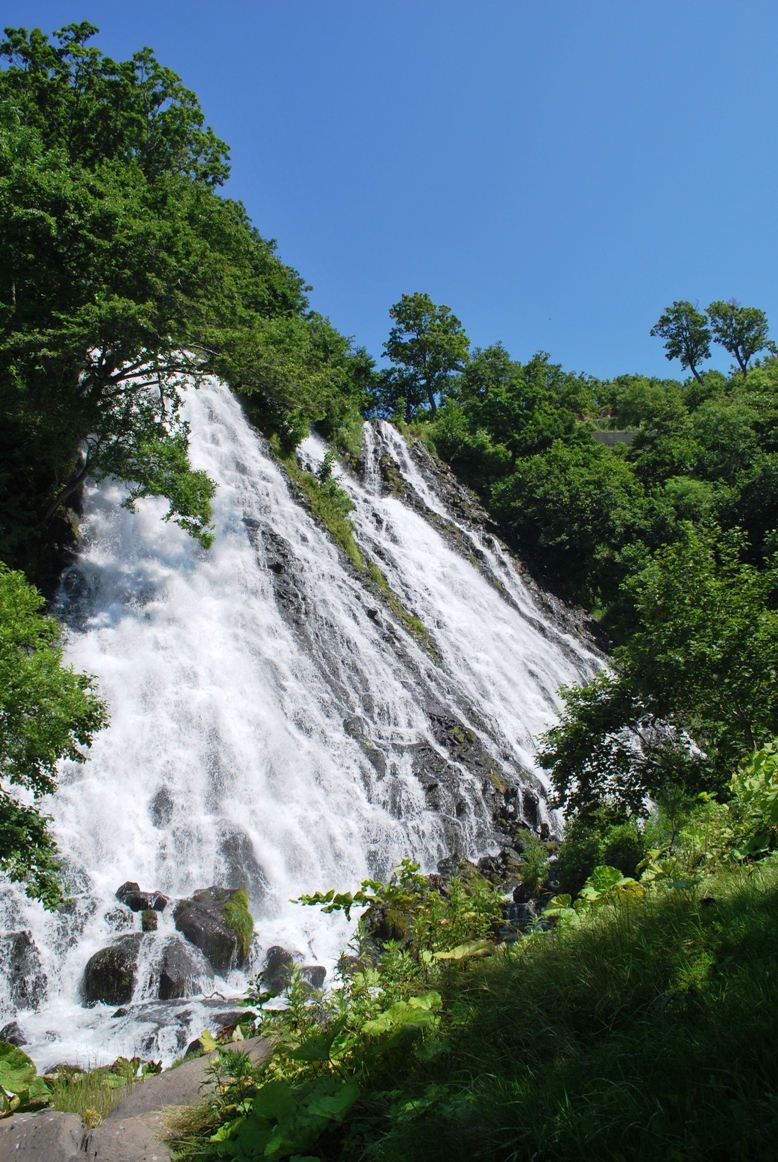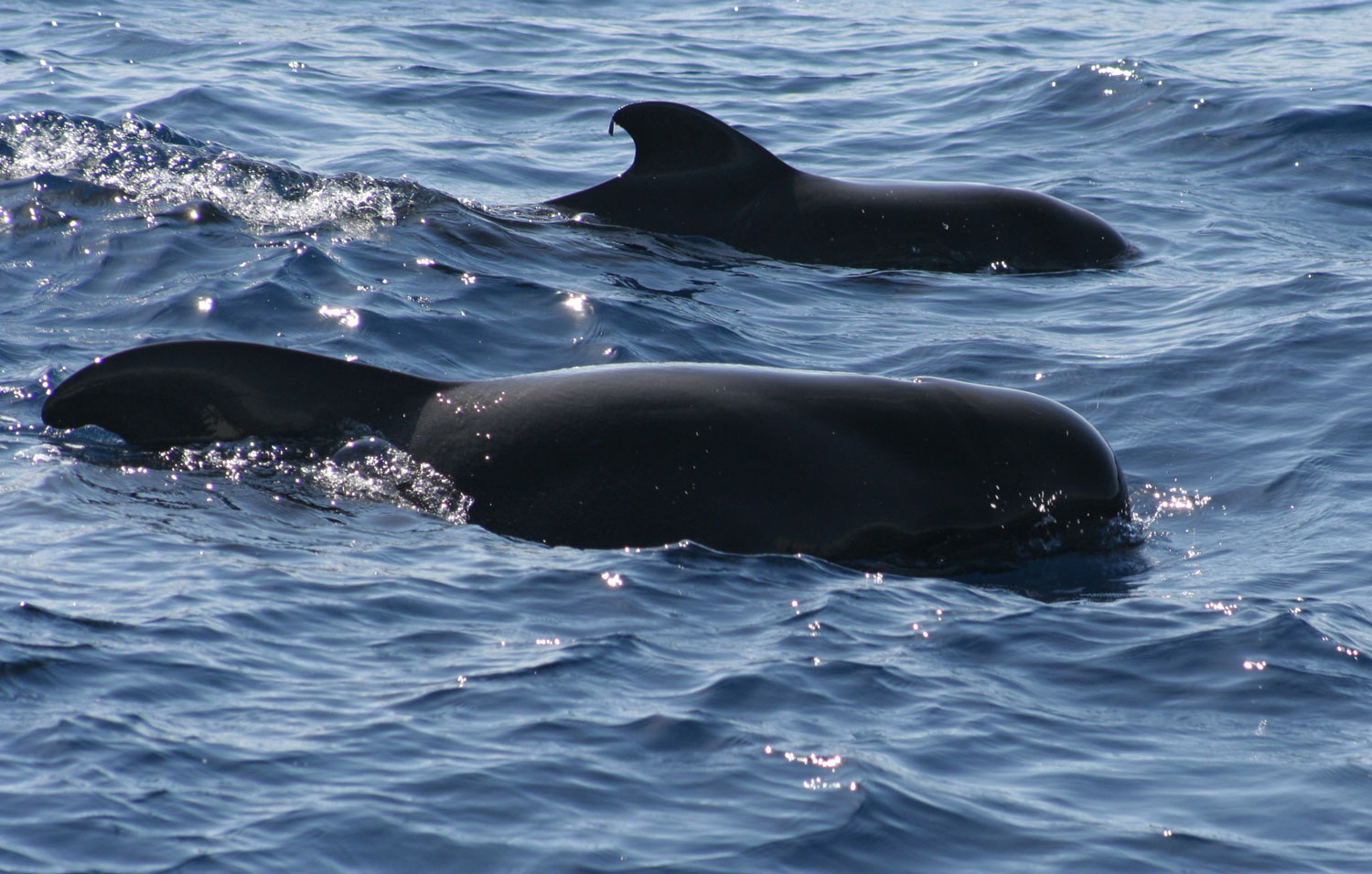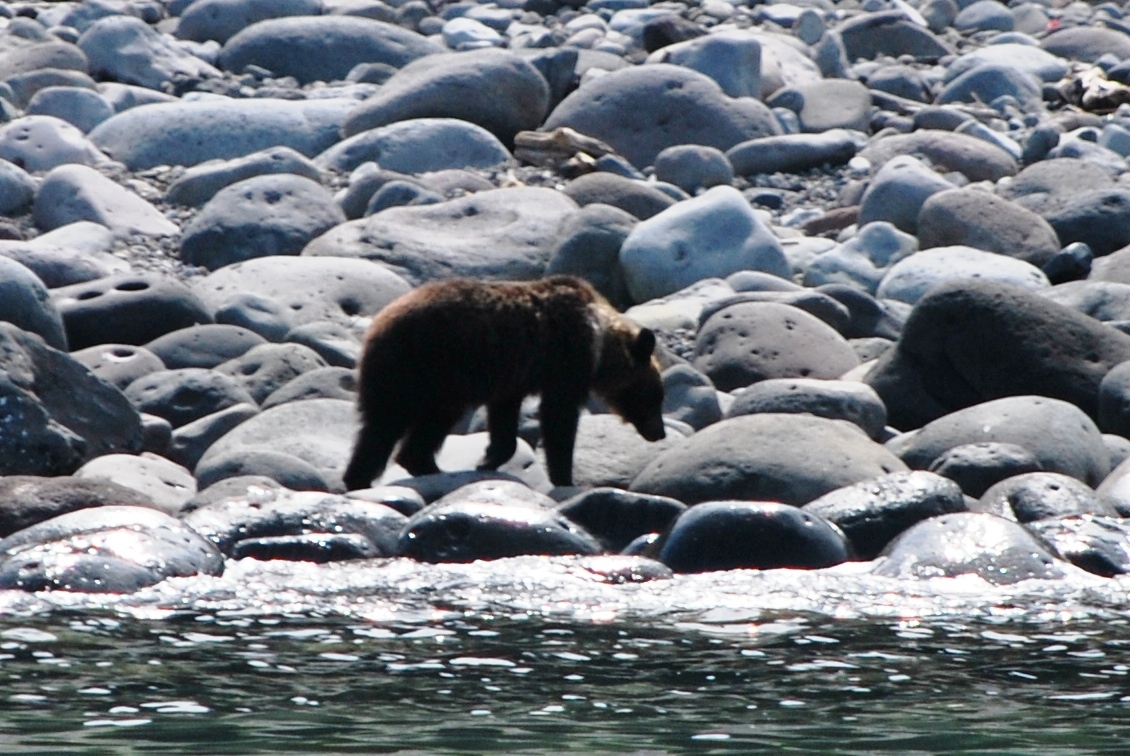
Shiretoko (1193)
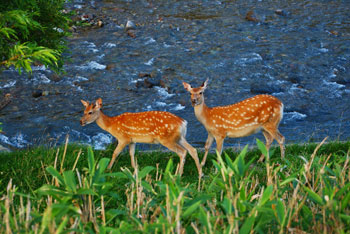 Shiretoko was inscribed as a World Heritage Site in 2005, with an area of 71,000 ha. It is situated in the north-east of Hokkaido (the northernmost island of Japan). The Shiretoko peninsula is patterned due to uplifting of the Pacific Plate subdued by a number of volcanoes that are sequenced around the centre of the peninsula, including the highest peak of the site, Mount Rausu (1661 m). It renders an extraordinary archetype of synergy between marine and terrestrial eco-systems. Countless rivers flow into the sea, and there is pristine vegetation, from the coast to the volcanic mountain tops. The site is home to many threatened and endangered species such as Blakiston’s fish owl Ketupa blakistoni (Endangered), Viola kitamiana, Eumetopias jubatus (Endangered), Callorhinus ursinus (Vulnerable), Physeter macrocephalus (Vulnerable), Balaenoptera borealis (Endangered), Mesoplodon ginkgodens, M. carlhubbsi, Dermochelys coriacea (Critically Endangered), Haliaeetus pelagicus (Vulnerable), Gorsachius goisagi (Endangered), Anas formosa (Vulnerable), Grus japonensis (Endangered) and Emberiza sulphurata (Vulnerable). The current threats to the property include melting of sea-ice, dam construction, eco-tourism, invasive species and climate change. The national laws and regulations conserving the property, including the Nature Conservation Law (1972), the Natural Parks Law (1957), the Law on Administration and Management of National Forests (1951) and the Law for the Conservation of Endangered Species of Wild Flora and Fauna (1992), have worked efficiently. The World Heritage values are not susceptible to intrinsic change. The productivity and the linkages of the two ecosystems (marine and terrestrial) and their elaborate linkages are operational.
Shiretoko was inscribed as a World Heritage Site in 2005, with an area of 71,000 ha. It is situated in the north-east of Hokkaido (the northernmost island of Japan). The Shiretoko peninsula is patterned due to uplifting of the Pacific Plate subdued by a number of volcanoes that are sequenced around the centre of the peninsula, including the highest peak of the site, Mount Rausu (1661 m). It renders an extraordinary archetype of synergy between marine and terrestrial eco-systems. Countless rivers flow into the sea, and there is pristine vegetation, from the coast to the volcanic mountain tops. The site is home to many threatened and endangered species such as Blakiston’s fish owl Ketupa blakistoni (Endangered), Viola kitamiana, Eumetopias jubatus (Endangered), Callorhinus ursinus (Vulnerable), Physeter macrocephalus (Vulnerable), Balaenoptera borealis (Endangered), Mesoplodon ginkgodens, M. carlhubbsi, Dermochelys coriacea (Critically Endangered), Haliaeetus pelagicus (Vulnerable), Gorsachius goisagi (Endangered), Anas formosa (Vulnerable), Grus japonensis (Endangered) and Emberiza sulphurata (Vulnerable). The current threats to the property include melting of sea-ice, dam construction, eco-tourism, invasive species and climate change. The national laws and regulations conserving the property, including the Nature Conservation Law (1972), the Natural Parks Law (1957), the Law on Administration and Management of National Forests (1951) and the Law for the Conservation of Endangered Species of Wild Flora and Fauna (1992), have worked efficiently. The World Heritage values are not susceptible to intrinsic change. The productivity and the linkages of the two ecosystems (marine and terrestrial) and their elaborate linkages are operational.
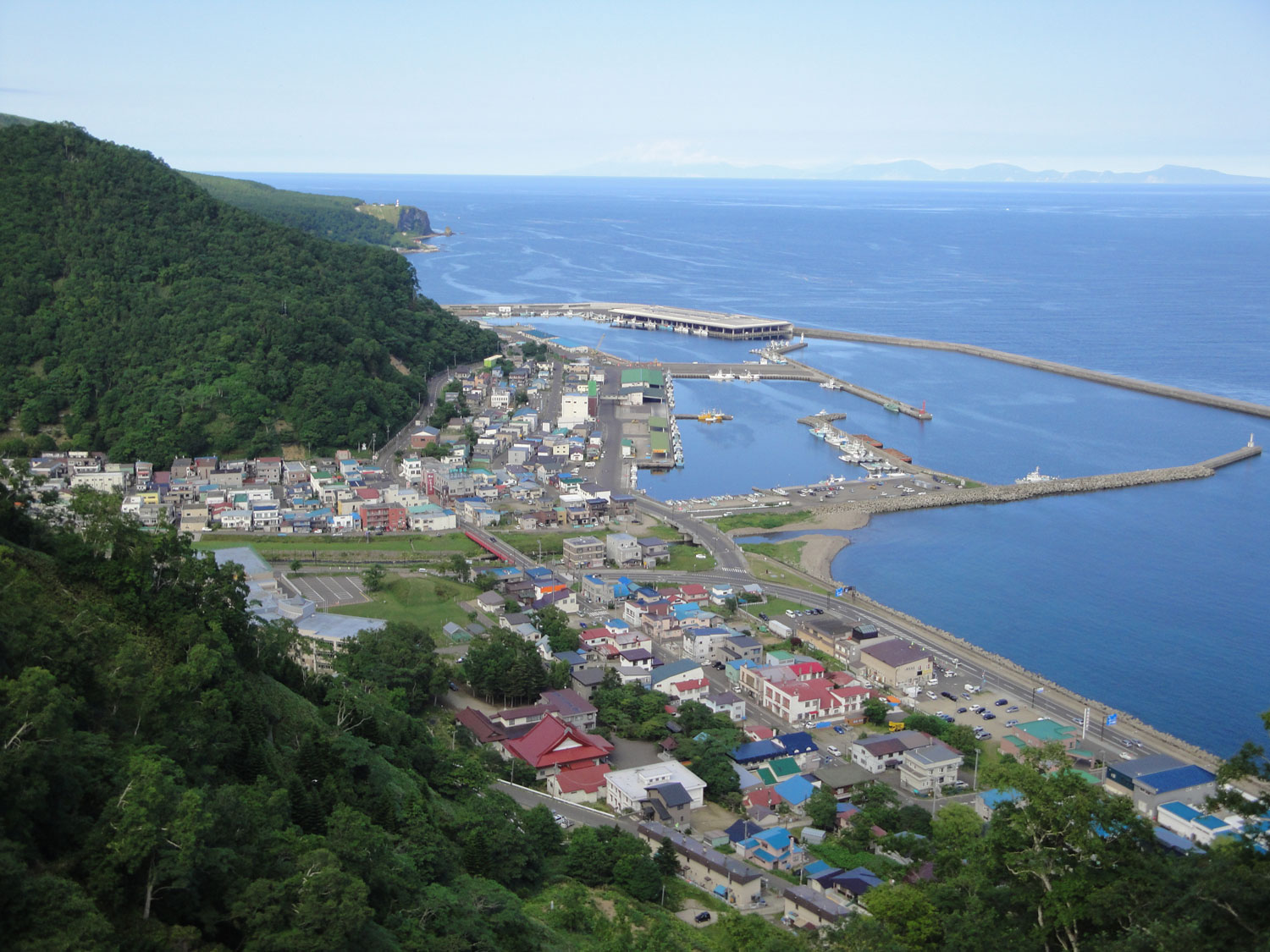 The Shiretoko World Heritage Site (43° 56' to 43° 57.984' N, 144° 57' to 144° 56.998' E) is situated north-east of Hokkaido (Japan’s northernmost island). The land considering the tip of Shiretoko Cape (the central point of the peninsula) protrudes into the Sea of Okhotsk and envelops the adjacent marine area. The total area of the property is 71,100 ha. The Shiretoko peninsula is shaped by the uplifting of the Pacific Plate, which is subdued by several volcanoes that are sequenced around the peninsula's centre, which includes the highest peak in the interior of the site, Mt Rausu (1661 m).
A total of 817 species have been recorded, including 233 species from the Pacific or Siberia. The abundance of phytoplankton in the melting sea ice draws zooplankton, 28 marine mammal species and 223 marine fish species, 150 of which live on the continental shelf, in water that is less than 200 m deep (World Heritage Datasheet 2011). The site has 42 species of freshwater fish. Amongst them are the marine species called the kaluga Huso dauricus (Critically Endangered) and Acipenser medirostris and Theragra chalcogramma (food for sea lion). More than 70% of the fishes are northern species, such as Hippoglossus stenolepis. There are nearly 10 salmonoid fish, Oncorhynchus keta, O. gorbuscha, O. masou, Salvelinus malma, S. leucomaenis and Hucho perryi (Critically Endangered). Shiretoko is one of the few areas in the Pacific where the whitespotted char S. leucomaenis is found. Plant species such as Viola kitamiana are endemic to the Shiretoko mountain range. The site supports one of the highest densities of brown bear documented, 35 bears per 100 km2, and the Blakiston’s fish owl (Endangered), of which very few are left in the world. The presence of endangered and vulnerable species such as Blakiston’s fish owl Ketupa blakistoni (Endangered), Viola kitamiana, Eumetopias jubatus (Endangered), Callorhinus ursinus (Vulnerable), Physeter macrocephalus (Vulnerable), Balaenoptera borealis (Endangered), Mesoplodon ginkgodens, M. carlhubbsi, Dermochelys coriacea (Critically Endangered), Haliaeetus pelagicus (Vulnerable), Gorsachius goisagi (Endangered), Anas formosa (Vulnerable), Grus japonensis (Endangered), and Emberiza sulphurata (Vulnerable) is an important aspect of the site’s inscription. The site is valuable for the study of threatened migratory birds, seabirds, salmanoid species and marine mammals, including Steller’s sea lion and cetacean species. Certain species such as Steller’s sea-eagle, the white-tailed eagle, Blakiston’s fish owl, and the black woodpecker are conserved and protected in the site. Twenty-eight marine mammal species are found along the coast of Shiretoko, including Steller’s sea lion (Endangered ), which is the flagship species. The coastal waters are crucial for overwintering and feeding species. These species feed along the edge of the continental shelf, close to the isobathymetric line of 200 m.
The Shiretoko World Heritage Site (43° 56' to 43° 57.984' N, 144° 57' to 144° 56.998' E) is situated north-east of Hokkaido (Japan’s northernmost island). The land considering the tip of Shiretoko Cape (the central point of the peninsula) protrudes into the Sea of Okhotsk and envelops the adjacent marine area. The total area of the property is 71,100 ha. The Shiretoko peninsula is shaped by the uplifting of the Pacific Plate, which is subdued by several volcanoes that are sequenced around the peninsula's centre, which includes the highest peak in the interior of the site, Mt Rausu (1661 m).
A total of 817 species have been recorded, including 233 species from the Pacific or Siberia. The abundance of phytoplankton in the melting sea ice draws zooplankton, 28 marine mammal species and 223 marine fish species, 150 of which live on the continental shelf, in water that is less than 200 m deep (World Heritage Datasheet 2011). The site has 42 species of freshwater fish. Amongst them are the marine species called the kaluga Huso dauricus (Critically Endangered) and Acipenser medirostris and Theragra chalcogramma (food for sea lion). More than 70% of the fishes are northern species, such as Hippoglossus stenolepis. There are nearly 10 salmonoid fish, Oncorhynchus keta, O. gorbuscha, O. masou, Salvelinus malma, S. leucomaenis and Hucho perryi (Critically Endangered). Shiretoko is one of the few areas in the Pacific where the whitespotted char S. leucomaenis is found. Plant species such as Viola kitamiana are endemic to the Shiretoko mountain range. The site supports one of the highest densities of brown bear documented, 35 bears per 100 km2, and the Blakiston’s fish owl (Endangered), of which very few are left in the world. The presence of endangered and vulnerable species such as Blakiston’s fish owl Ketupa blakistoni (Endangered), Viola kitamiana, Eumetopias jubatus (Endangered), Callorhinus ursinus (Vulnerable), Physeter macrocephalus (Vulnerable), Balaenoptera borealis (Endangered), Mesoplodon ginkgodens, M. carlhubbsi, Dermochelys coriacea (Critically Endangered), Haliaeetus pelagicus (Vulnerable), Gorsachius goisagi (Endangered), Anas formosa (Vulnerable), Grus japonensis (Endangered), and Emberiza sulphurata (Vulnerable) is an important aspect of the site’s inscription. The site is valuable for the study of threatened migratory birds, seabirds, salmanoid species and marine mammals, including Steller’s sea lion and cetacean species. Certain species such as Steller’s sea-eagle, the white-tailed eagle, Blakiston’s fish owl, and the black woodpecker are conserved and protected in the site. Twenty-eight marine mammal species are found along the coast of Shiretoko, including Steller’s sea lion (Endangered ), which is the flagship species. The coastal waters are crucial for overwintering and feeding species. These species feed along the edge of the continental shelf, close to the isobathymetric line of 200 m.
Criterion (ix)
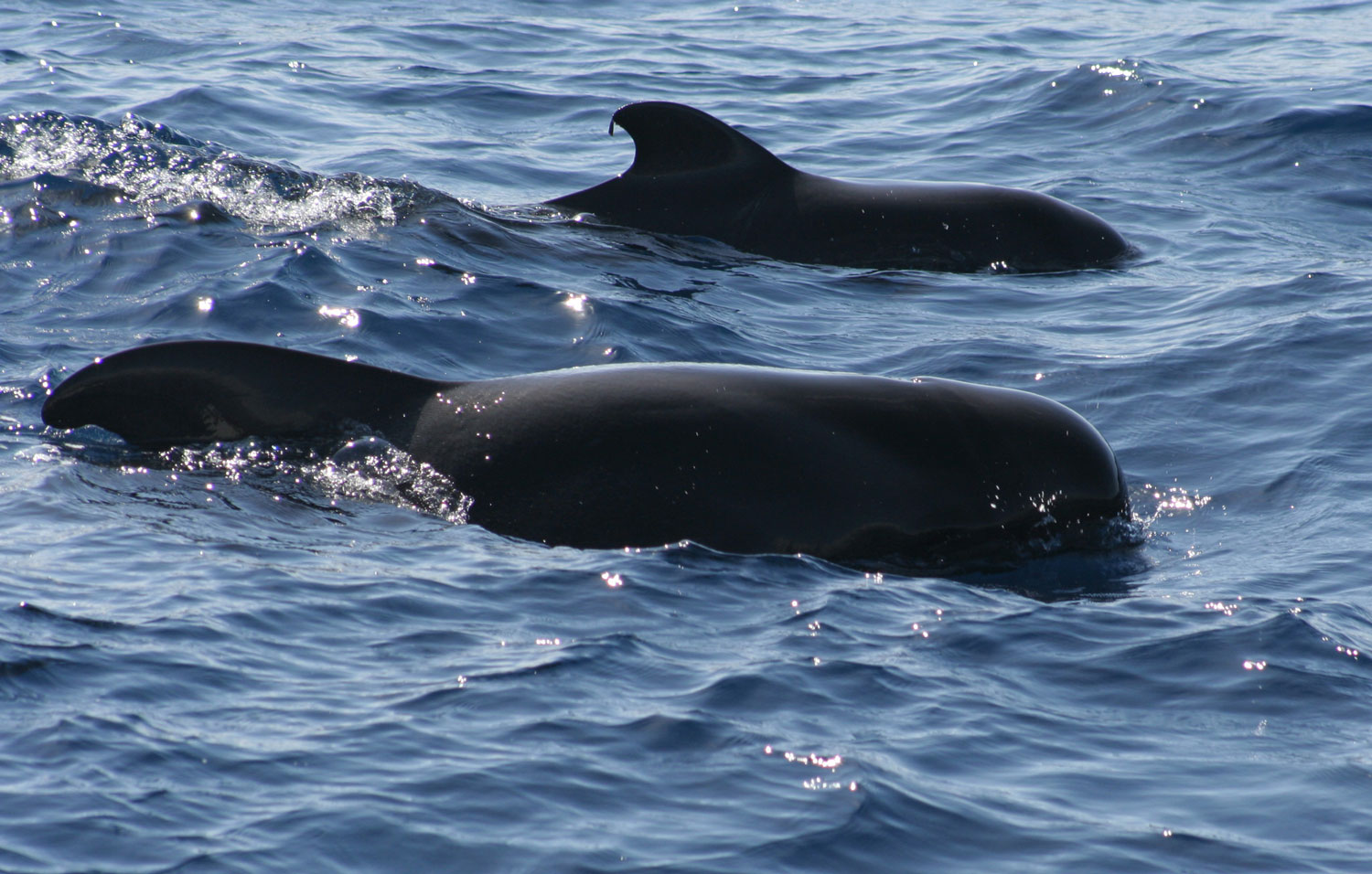 Shiretoko provides an outstanding example of the interaction of marine and terrestrial ecosystems as well as extraordinary ecosystem productivity, largely influenced by the formation of seasonal sea ice at the lowest latitude in the northern hemisphere, occurring earlier here than in other sea ice areas.Illustrating ecological processes, phytoplankton blooms develop on the nutrients supplied by the melting sea ice and from the deep ocean, entering the system through circulation of currents. The food webs starting from the phytoplankton blooms involve fish, birds and mammals, and form dynamic ecosystems over ocean, rivers and forests.
Shiretoko has particular importance for a number of marine and terrestrial species. Combining northern species from the continent and southern species from Honshu, the property supports a range of animal species. These include a number of endangered and endemic species, such as the Blackiston’s Fish owl and the plant species Viola kitamiana. The property has one of the highest recorded densities of brown bear populations in the world. The property has significance as a habitat for globally threatened sea birds and is a globally important area for migratory birds.
Shiretoko is also globally important for a number of salmonid species, encompassing habitat in many small watersheds and supporting several species of Pacific salmonids, including White spotted charr, masu salmon, chum salmon and pink salmon. Those watersheds have specific importance as it is the southernmost habitat in the world for the sea run of the Dolly varden. The property is a seasonal habitat for a number of marine mammals including the Steller’s sea lion, Spotted Seal, Killer Whale, Minke Whale, Sperm Whale, Dall’s Porpoise and the endangered Fin Whales.
Shiretoko provides an outstanding example of the interaction of marine and terrestrial ecosystems as well as extraordinary ecosystem productivity, largely influenced by the formation of seasonal sea ice at the lowest latitude in the northern hemisphere, occurring earlier here than in other sea ice areas.Illustrating ecological processes, phytoplankton blooms develop on the nutrients supplied by the melting sea ice and from the deep ocean, entering the system through circulation of currents. The food webs starting from the phytoplankton blooms involve fish, birds and mammals, and form dynamic ecosystems over ocean, rivers and forests.
Shiretoko has particular importance for a number of marine and terrestrial species. Combining northern species from the continent and southern species from Honshu, the property supports a range of animal species. These include a number of endangered and endemic species, such as the Blackiston’s Fish owl and the plant species Viola kitamiana. The property has one of the highest recorded densities of brown bear populations in the world. The property has significance as a habitat for globally threatened sea birds and is a globally important area for migratory birds.
Shiretoko is also globally important for a number of salmonid species, encompassing habitat in many small watersheds and supporting several species of Pacific salmonids, including White spotted charr, masu salmon, chum salmon and pink salmon. Those watersheds have specific importance as it is the southernmost habitat in the world for the sea run of the Dolly varden. The property is a seasonal habitat for a number of marine mammals including the Steller’s sea lion, Spotted Seal, Killer Whale, Minke Whale, Sperm Whale, Dall’s Porpoise and the endangered Fin Whales.
Status
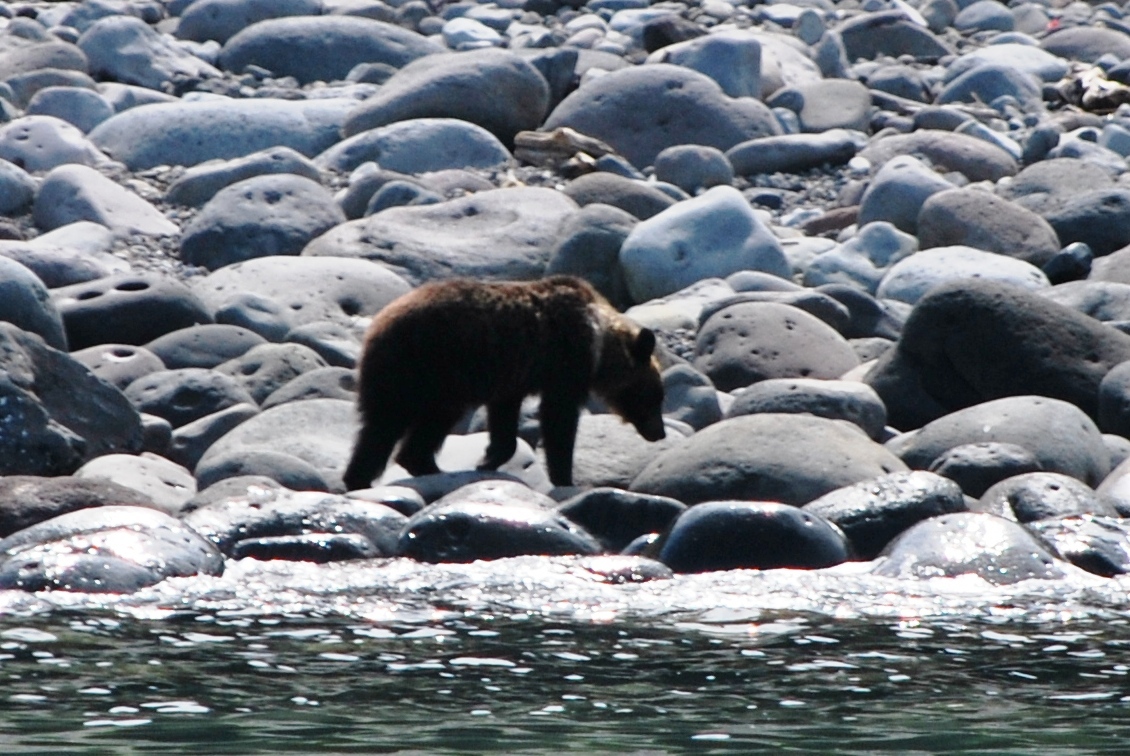 The national laws and regulations conserving the property include the Nature Conservation Law (1972), the Natural Parks Law (1957), the Law on Administration and Management of National Forests (1951) and the Law for the Conservation of Endangered Species of Wild Flora and Fauna (1992). Regulations for protection against overfishing and marine pollution act as safeguards to protect the marine biodiversity and are managed in conformity with other laws. For instance, the Regulation of Sea Fisheries Adjustment in Hokkaido is based on the Fisheries Law. Rare and endangered species are found within the property, for instance Steller’s sea eagle, the white-tailed eagle and Blakiston’s fish owl. These are designated and legally protected as National Endangered Species of Wild Flora and Fauna on basis of the Species Conservation Law or as Natural Monuments according to the Law for Protection of Cultural Properties. A large portion of national forests comprise the terrestrial area that is primarily controlled and administered by the Japanese government and is stipulated in the protected areas that comprise - Onnebetsudake Wilderness Area, Shireteko National Park, Shiretoko National Wildlife Protection Area, and Shiretoko Forest Ecosystem Reserve. The Shiretoko site is divided into Area A (core area) and Area B (buffer area): Area A is for conserving the wilderness and Area B is for managing and preserving the natural environment in harmony with human activities such as tourism and fisheries. Analogous designations depict an efficient system for protecting Japan's natural environment by establishing an inclusive property system that is combined with strict legal action. The authorities have established an effective system for protection of the property, with legal restrictions on development and other activities.
Shoyama and Braimoh (2011) indicated that there is considerable deforestation in the site. The site has been fragmented. This represents a challenge to rebuilding the ecology of keystone species such as fish owls. The stress level is heightened at all points of ecosystem management, especially with respect to keystone species, when they include endangered species such as Blakiston’s fish owl K. blakistoni, which needs proactive conservation measures to safeguard the resources, habitat, and species at all trophic levels, supporting interactions within and between the ecosystems. Additionally, the surrounding development of landscapes pose a challenge that has the potential to cause deterioration of the ecological functions, fine scale heterogeneity and movements of threatened species.
Measures adopted by the Japanese authority are based on several recommendations of the River Construction Advisory Committee to install fishways for fish species that cannot swim upstream due to the presence of check dams. These measures have led to the expansion of spawning ranges and increases in egg production. Presently, visitors require permission for going beyond walkways during congested periods. The authorities have been invested in carrying out in depth research to study the scientific background of wildlife management involving terrestrial mammals, birds, marine life, vegetation, tourist spots, local communities and farmlands. Moreover, education and awareness have been the active tools for conducting outreach programmes and reinforce the importance of the human network for conserving nature via providing training to students and the local community.
The national laws and regulations conserving the property include the Nature Conservation Law (1972), the Natural Parks Law (1957), the Law on Administration and Management of National Forests (1951) and the Law for the Conservation of Endangered Species of Wild Flora and Fauna (1992). Regulations for protection against overfishing and marine pollution act as safeguards to protect the marine biodiversity and are managed in conformity with other laws. For instance, the Regulation of Sea Fisheries Adjustment in Hokkaido is based on the Fisheries Law. Rare and endangered species are found within the property, for instance Steller’s sea eagle, the white-tailed eagle and Blakiston’s fish owl. These are designated and legally protected as National Endangered Species of Wild Flora and Fauna on basis of the Species Conservation Law or as Natural Monuments according to the Law for Protection of Cultural Properties. A large portion of national forests comprise the terrestrial area that is primarily controlled and administered by the Japanese government and is stipulated in the protected areas that comprise - Onnebetsudake Wilderness Area, Shireteko National Park, Shiretoko National Wildlife Protection Area, and Shiretoko Forest Ecosystem Reserve. The Shiretoko site is divided into Area A (core area) and Area B (buffer area): Area A is for conserving the wilderness and Area B is for managing and preserving the natural environment in harmony with human activities such as tourism and fisheries. Analogous designations depict an efficient system for protecting Japan's natural environment by establishing an inclusive property system that is combined with strict legal action. The authorities have established an effective system for protection of the property, with legal restrictions on development and other activities.
Shoyama and Braimoh (2011) indicated that there is considerable deforestation in the site. The site has been fragmented. This represents a challenge to rebuilding the ecology of keystone species such as fish owls. The stress level is heightened at all points of ecosystem management, especially with respect to keystone species, when they include endangered species such as Blakiston’s fish owl K. blakistoni, which needs proactive conservation measures to safeguard the resources, habitat, and species at all trophic levels, supporting interactions within and between the ecosystems. Additionally, the surrounding development of landscapes pose a challenge that has the potential to cause deterioration of the ecological functions, fine scale heterogeneity and movements of threatened species.
Measures adopted by the Japanese authority are based on several recommendations of the River Construction Advisory Committee to install fishways for fish species that cannot swim upstream due to the presence of check dams. These measures have led to the expansion of spawning ranges and increases in egg production. Presently, visitors require permission for going beyond walkways during congested periods. The authorities have been invested in carrying out in depth research to study the scientific background of wildlife management involving terrestrial mammals, birds, marine life, vegetation, tourist spots, local communities and farmlands. Moreover, education and awareness have been the active tools for conducting outreach programmes and reinforce the importance of the human network for conserving nature via providing training to students and the local community.
